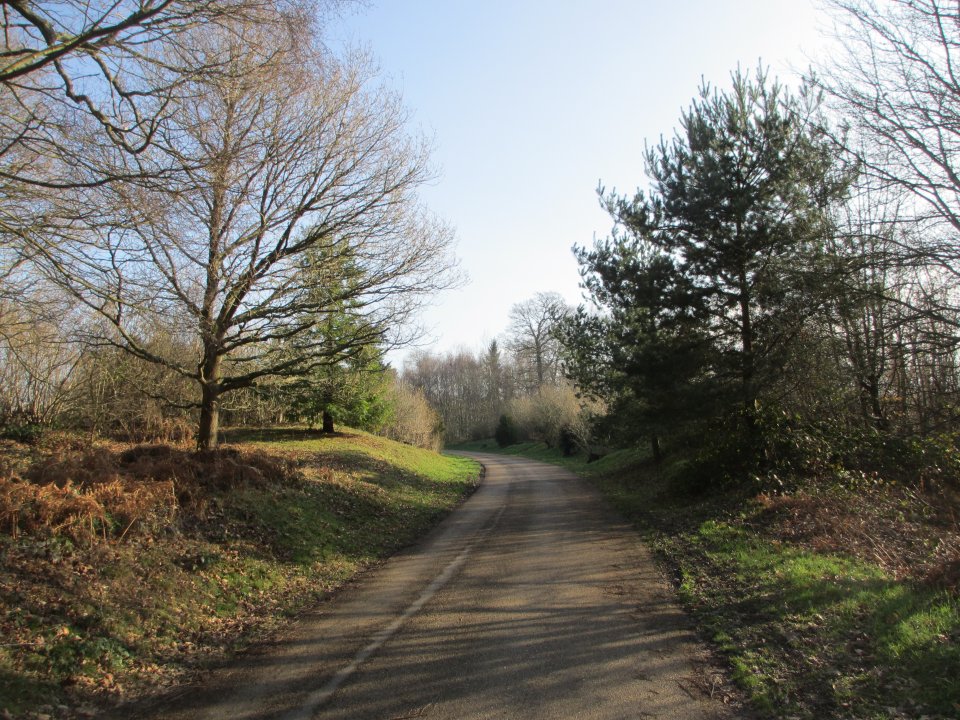
The bridge is located within the High Weald Area of Natural Beauty. The historic West drive which was laid out in 1842 is used as the main entrance to Scotney Castle.
To mitigate the development of a 3.2km bypass by building a green land bridge to enable the historic West drive to be reinstated on its original line and provide landscape and habitat connectivity.
The bridge was constructed as part of a Highways England improvement scheme for a new dual carriageway bypass around Lamberhurst village. A one-way road runs through the centre of the bridge, reconnecting the historic West drive to Scotney Castle. The bridge also serves as a connection between two woodlands and was designed to continue the roll of the hill that was disrupted by the bypass. Stumps from trees that were cut down for the bypass were put onto the bridge to give a more natural feel, one of which is now regenerating.
Highways England handed the management over to the National Trust in 2006. The National trust used traditional management techniques such as hedge laying to create a safe and connected habitat for wildlife. Further management includes annual hay cutting of the grass verges and rotational scrub cutting to keep a mosaic of habitat and reduce the load on the bridge.
Nest boxes for dormice were placed on the bridge and 6 years after construction breeding dormice were recorded. A wealth of wildlife has been recorded using the bridge including deer, foxes and badgers. Bats were found to be using the bridge as a flyway across the bypass. The bats were using the vegetated part of the bridge to navigate over the duel carriageway rather than the hard feature of the bridge itself.
|
Potential impacts/ benefits |
||||
|
Challenges addressed |
Enhancing sustainable urbanisation |
Restoring ecosystems and their functions |
Developing climate change mitigation |
Developing climate change adaptation |
|
Green space management (Including enhancing/conserving urban biodiversity) |
· Increase accessibility to green open spaces. · Increase awareness of NbS and their effectiveness and co benefits |
· Increase biodiversity · Increase quality and quantity of green and blue infrastructure · Greater ecological connectivity |
||
|
Climate resilience |
· Improve air quality |
· Carbon sequestration and storage |
· Reduce run off |
|
- Reduce run-off
- Carbon sequestration and storage
- Greater ecological connectivity across urban regenerated sites
- Increase Biodiversity
- Increase quality and quantity of green and blue infrastructures
- Improve air quality
- Increase accessibility to green open spaces
- Increase awareness of NBS solution & their effectiveness and co benefits
Can be used when new roads may split up habitats or disrupt landscapes.
Wildlife will use and can thrive within green bridges.
Green bridges need to be wide enough to host shrubs and grasses that will allow wildlife to be able to keep away from people, cars, dogs etc.
Hedges on green bridges are important for keeping connectivity however need to ensure that native trees and scrubs are planted.
Green bridges can be relatively cheap and easy to manage and maintain.
Funded by Highways England. The National Trust funds the maintenance, however the costs are minimal and volunteers help to manage the site.



